This post is a guide to visiting the Smithsonian’s National Museum of African-American History & Culture (NMAAHC), including information on tickets, tours, how to get there, and what to expect updated and the new ticketing policies.
As a tour guide in Washington, DC, for over a decade, I take groups to visit museums every week. The National Museum of African-American History & Culture is one of the most moving museums, especially with school groups.
When the museum opened in 2016, the team at DC by Foot immediately started arranging group visits for the groups we work with and I have been bringing people there ever since.
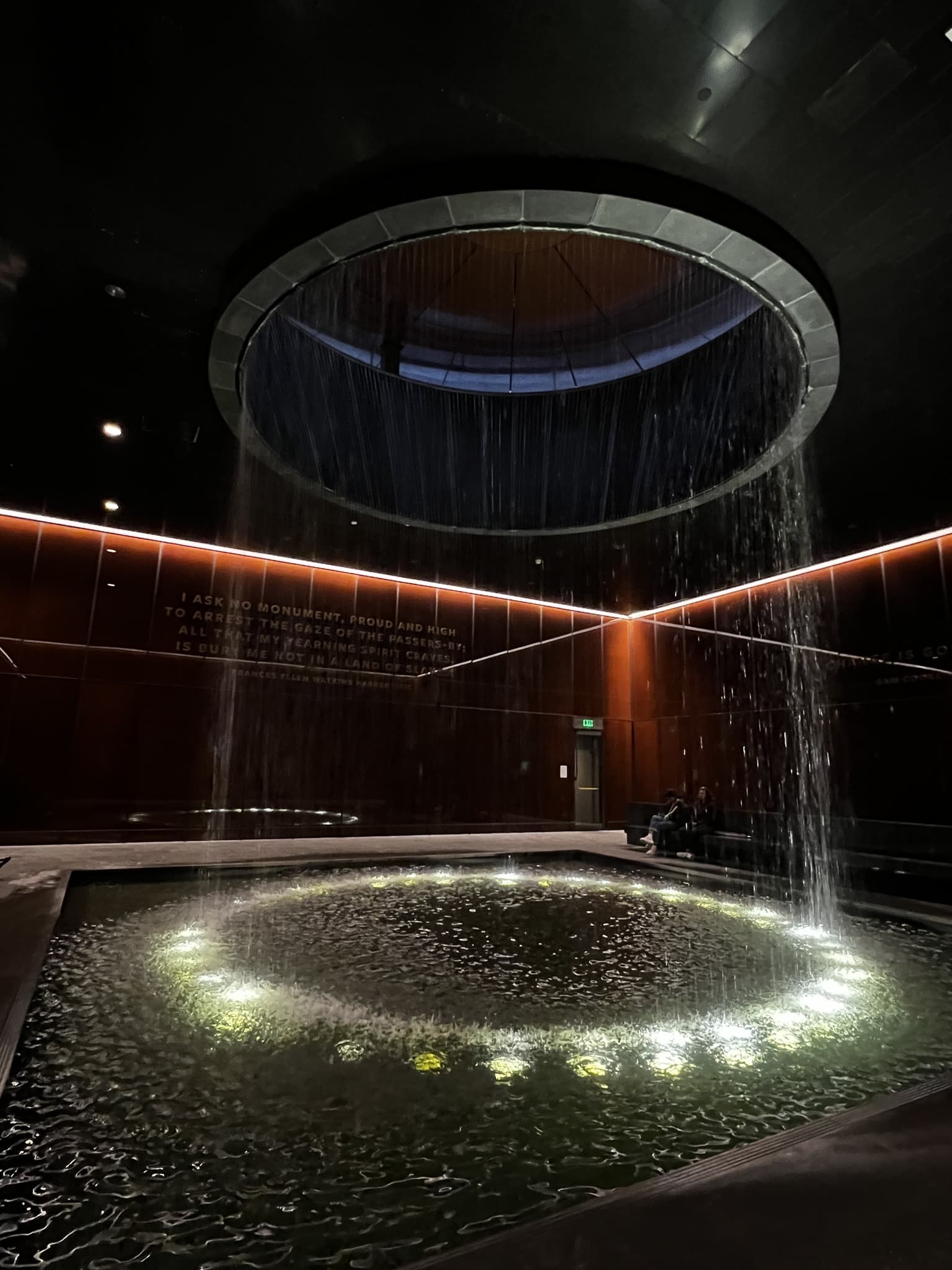
I am not a member of the Black Washington community, so these are not my stories to tell. I am grateful for the incredible curation of this museum to share the history and culture in a way I cannot.
I agree with the members of our Washington DC Travel Tips Facebook Group that this is a museum worth visiting.

Free Tickets to the African American Museum
Unlike many of the Smithsonian museums, the NMAAHC DOES require timed tickets to visit.
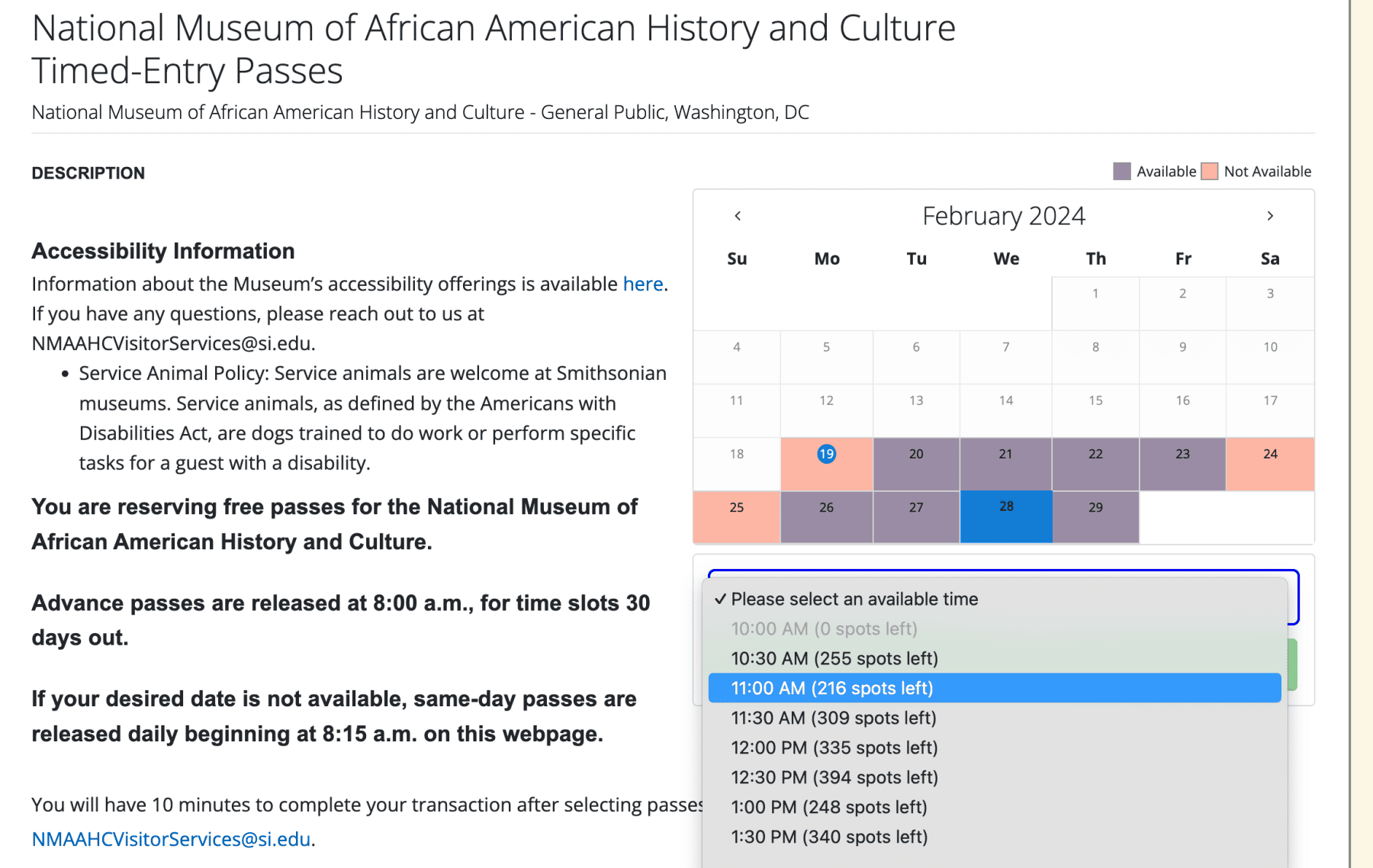
Tickets are free, but we highly recommend you reserve them as soon as possible as tickets often become fully booked. Regardless of age, everyone requires a ticket, and you may reserve up to 9 tickets at one time.
Each day at 8:00 am EST, tickets open for 30 days out. At 8:15 am, a small number of same-day passes are released online.
You can reserve free timed tickets on their website: https://nmaahc.si.edu/passes
Tickets to the African American Museum are timed - but you can enter the museum anytime AFTER your reserved time until 4 pm. It is okay if you are late to your timed tickets to the NMAAHC.

Plan Your Visit
The information in this section will help you plan an outing the National Museum of African-American History & Culture. This is where you will find details on how to get there, the best times to visit, security information, and what to expect.
WHERE IS THE NMAAHC?
The NMAAHC is located on the National Mall at 1400 Constitution Avenue NW. It is between Constitution Avenue and Madison Drive, next to the American History Museum and the Washington Monument.
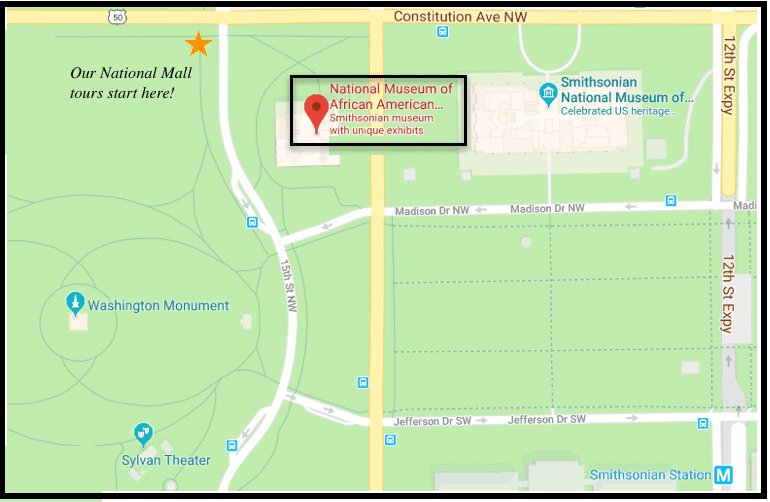
There are many ways to get there and it is a short walk from many other destinations on the National Mall. We recommend this link for specific directions to the museum: https://www.si.edu/museums/african-american-museum
The nearest Metro Stations are Federal Triangle (Blue, Orange, and Silver line) and Smithsonian (Blue, Orange, and Silver line.)
It is also a short walk (10-15 minutes) from Metro Center (Red Line.) The Circulator Bus drops at the Washington Monument, just across the street from the museum. For more information on navigating the Metro, check out our blog post HERE.
Alternatively, many of the hop on hop off buses have a stop nearby to the NMAAHC.
BEST TIME TO VISIT
The NMAAHC is a very in-demand tourist destination with limited capacity. It attracts large crowds throughout the year, especially on weekends, and is always busy. The museum opens at 10 am and by noon, it is pretty crowded.

The best time to enter may depend on your timed entry passes but if you want to avoid crowds, we suggest planning a visit to the museum for the off-peak season (January-February and September-December.)
Typical weekdays during the off-peak months will be a little more manageable, especially if you arrive when the museum opens at 10am.
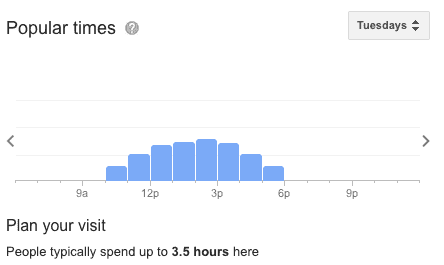
Many members of our 50K person Washington DC Travel Tips Facebook group want to know how long to spend at the African American Museum.

A popular suggestion is to split up a visit if you can snag tickets on two different days.

SECURITY SCREENING
Like all Smithsonian museums in D.C., you will encounter security at the NMAAHC. The following items are not permitted in the museum:
- Tripods, monopods, selfie sticks
- Guns
- 3D weapons
- Knives of any size
- Pets
- Food and drink (other than bottled water)
- Scissors
- Aerosol cans, including pepper spray and mace
- Tools
There are lockers at the museum to store bags and coats.
You are more than welcome to bring strollers, walkers, and wheelchairs into the museum and it is completely ADA-compliant. Smartphones are also permitted and you may take non-flash, non-commercial photography in the galleries, unless otherwise posted.
You can bring food and drinks into the museum if they are sealed and not eaten inside. A great cafe is open from 11:00 am to 3:00 pm (opens at 12:00 pm on Mondays) if you're hungry!
A GUIDE TO VISITING NMAAHC
The NMAAHC is a very popular museum and you can expect lines to enter, especially right when the museum opens at 10am.
Even if you have obtained a timed entry pass, you might encounter lines at the security entrance during peak season.
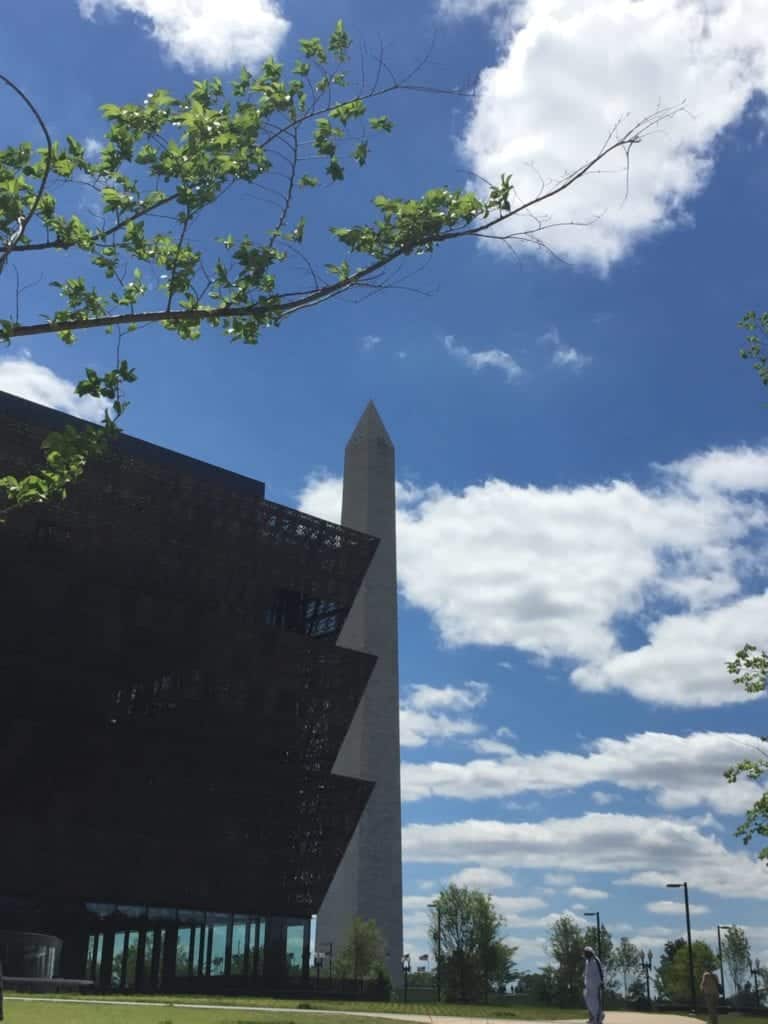
Once you clear security, the museum itself is self-guided. All guests enter the museum in Heritage Hall (Floor L1.) We suggest taking the escalators (or elevator) downstairs to the lower level, known as the Concourse.

This is where you can access the three floors of history galleries (Floors C1-C3) and it is the only way to enter that portion of the museum.
You can expect there might be a line at this point, especially during peak season. The history gallery experience begins in an elevator that takes you to the lowest level of the museum.
The first exhibit highlights the Atlantic Slave Trade and it works its way chronologically up to 2008 and the election of the first African-American President.
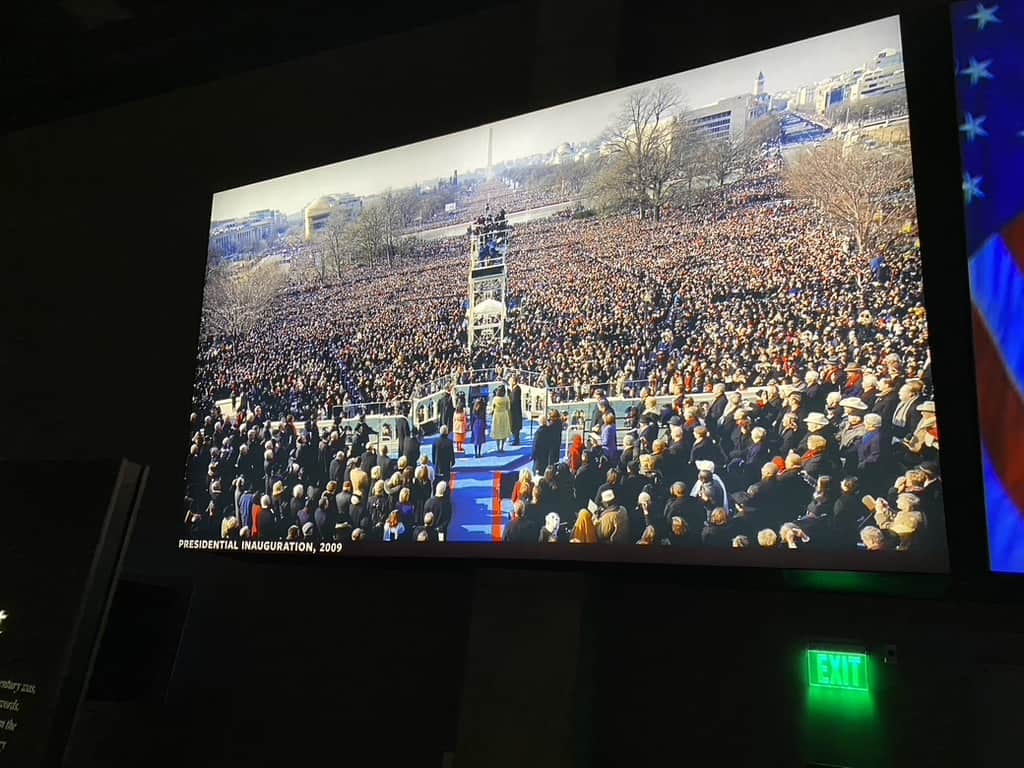
The history galleries empty you right next to the Contemplative Court, a perfect spot to reflect and relax before heading upstairs.
On the upper levels (Floors L2-L4), you will find exhibitions highlighting the cultural contributions of African-Americans, community galleries, and more. You can find a detailed breakdown of the museum here: https://nmaahc.si.edu/visit/maps
This museum is HUGE! It has 85,000 square feet of exhibition space with nearly 3,000 objects and 183 videos.
The average guest visit time at most museums in D.C. is 2 hours - the average guest visit time at NMAAHC is 5 hours. Of course, much will depend on your pace, level of interest, and how crowded the museum is, but know that you won’t likely be able to see it all in one visit.
In order to make the most of your visit, we suggest downloading the museum’s free mobile app, which will help you familiarize yourself with the layout, exhibits, and objects that you might want to see during your visit: https://nmaahc.si.edu/connect/mobile/apps. The app also has information in Spanish and French (printed brochures in those languages are available at the welcome desk as well.)
Guided Tours
There are no guided tours inside the NMAAHC at this time.
Museum volunteers and staff are at the welcome desk in Heritage Hall and at highly trafficked points in the museum to answer questions and give you guidance on your visit. You can see a list of upcoming museum events here: https://nmaahc.si.edu/calendar/upcoming
While we do not offer guided tours inside the NMAAHC, our National Mall and All-in-One tours begin not far from the museum. Our guides are happy to provide detailed guidance on getting the most out of your visit and can answer any questions you have.
Free Tours by Foot offers guided tours of many of the other Smithsonian Museums, however.
If you're interested in the Black American history of Washington DC, we have two self-guided tours that focus on this area.
Exhibit Highlights
This museum, like all the Smithsonian museums, is massive!
You could spend days here and not see every artifact on display. We highly recommend spending a few minutes at the welcome desk to get recommendations on objects and exhibits that will most fit your interests.
If possible, review the museum map before you arrive here (https://nmaahc.si.edu/visit/maps) and familiarize yourself with the exhibits.

For a first visit to the museum, these are what we consider the must-see areas:
C3: Slavery & Freedom (1400-1877)
This is where the history exhibits begins and it works its way chronologically through the Atlantic slave trade into the American Revolution, the American Civil War, and the Reconstruction era.
Be sure to see the Edisto Island slave cabin, which was brought from South Carolina to be installed whole in the gallery’s main hall as well as the lace shawl Queen Victoria gifted to Harriet Tubman.
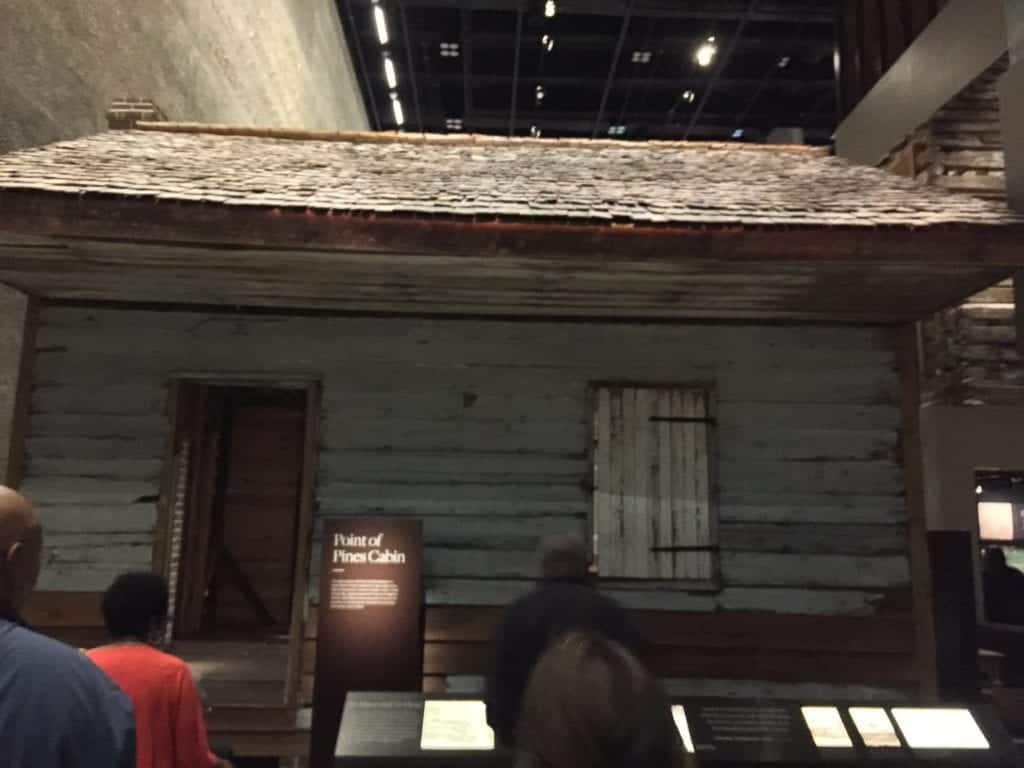
C2: Defending Freedom, Defining Freedom (1876-1968)
This is a continuation of the history exhibits, focusing on the century of Jim Crow laws and racial division across the nation. A Southern Railway passenger coach with segregated compartments is a must-see. Right across from the railcar is an interactive element that put you in the position of protesting and organizing - you can sit in a modern recreation of the Woolworth’s lunch counter and explore critical actions that were taken during the Civil Rights movement.
A guard tower from Camp H at Louisiana State Penitentiary is at the end of the lunch counter - you will usually see a line wrapping around the tower. That is the Emmett Till Memorial, one of the most moving exhibits in the museum. Till’s murder at the age of 14 in 1955 was a defining moment in the Civil Rights movement, particularly after his mother insisted that her son be displayed in a glass topped casket for the world to see. The original casket is on display, as well as an exhibit about Till’s life, death, and legacy.
Note: Photography is not allowed at all in the Emmett Till Memorial exhibit.
C3: A Changing America (1968 and Beyond)
This is the final floor in the history exhibits and brings the story of the museum into the present day. The year of 1968 is highlighted, as a landmark year for Civil Rights, with exhibitions highlighting the assassination of Martin Luther King Jr.
The exhibit looks at both advances and setbacks in the fight for equality, including pop cultural items such as the set for the Oprah Winfrey show and the boombox carried by Radio Raheem (portrayed by Bill Nunn) in Spike Lee’s Do The Right Thing.
Be sure to look for the black and red dress worn by First Lady Michelle Obama during the ceremony to mark the 50th Anniversary of the March on Washington, 1963.
Concourse Level
You’ll find the Contemplative Court as you exit the history galleries - this peaceful space is meant for reflection and contemplation as you transition out of the history galleries and back into the museum. You might recognize this from the final season of the TV show Scandal - Kerry Washington actually filmed here at the museum!
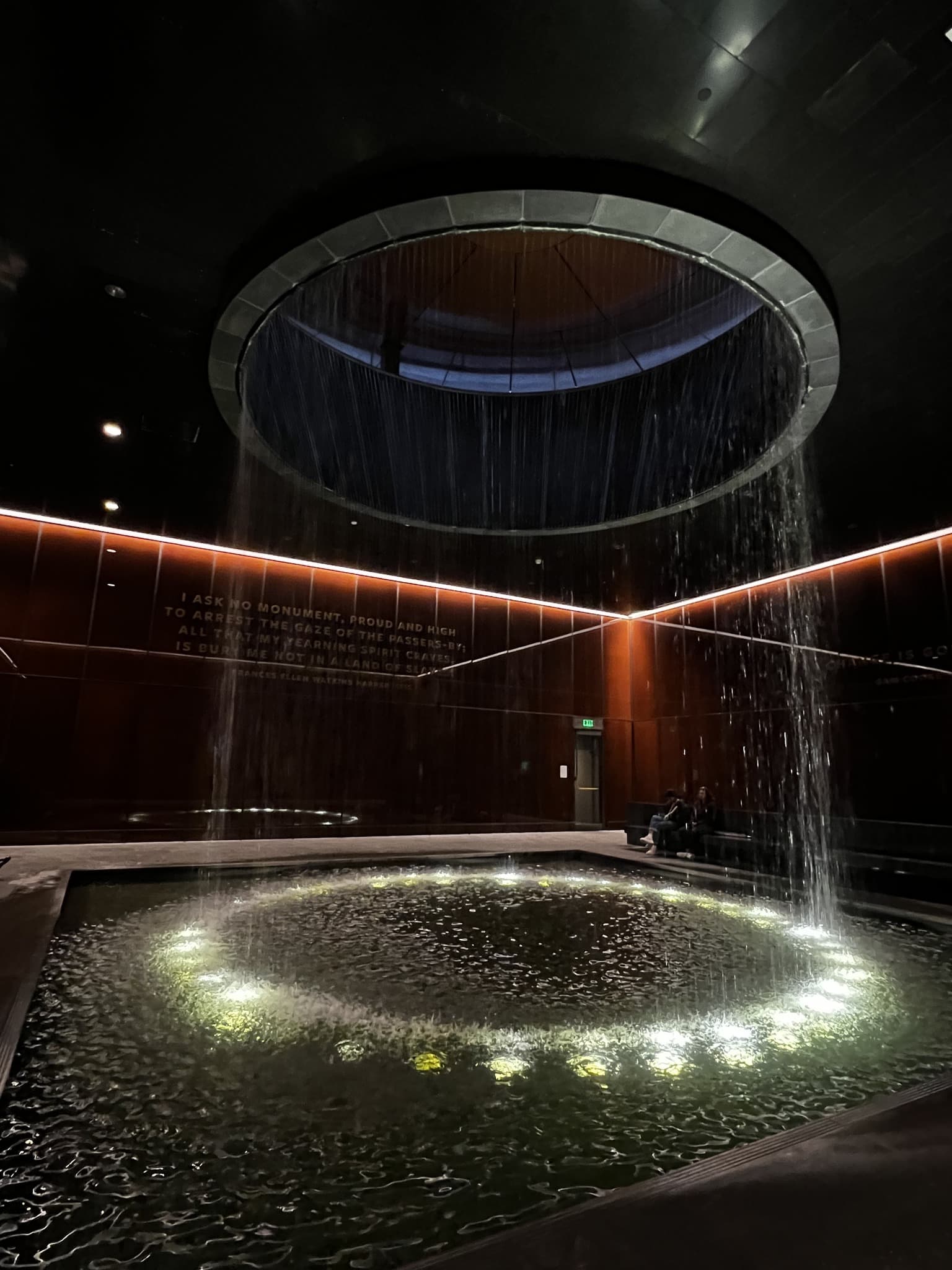
Heritage Hall
You’ll find the gift shop, restrooms, and welcome desk here. The Corona Pavilion is currently screening a film by award-winning filmmaker Ava Duvernay here. The film, titled August 28th, looks at one date through multiple years to tell the story of Emmett Till, Motown music, Martin Luther King Jr, Hurricane Katrina, and more.
L2: Explore More
This level primarily offers resources for researchers, educators, and those wishing to learn more about their own family history. These are a series of rotating interactive activities in this space and is a good place to stop with children who want to get hands-on with the museum.
L3: Community Galleries
The exhibits here focus on African-American contributions to the military and sports as well as the building of communities across the nation.
Highlights include information on all 89 African-Americans who have been awarded the Medal of Honor, the flight jacket of Lt. Col. Woodrow W. Crockett (one of the Tuskegee Airmen), and the efforts taken to desegregate the armed forces.
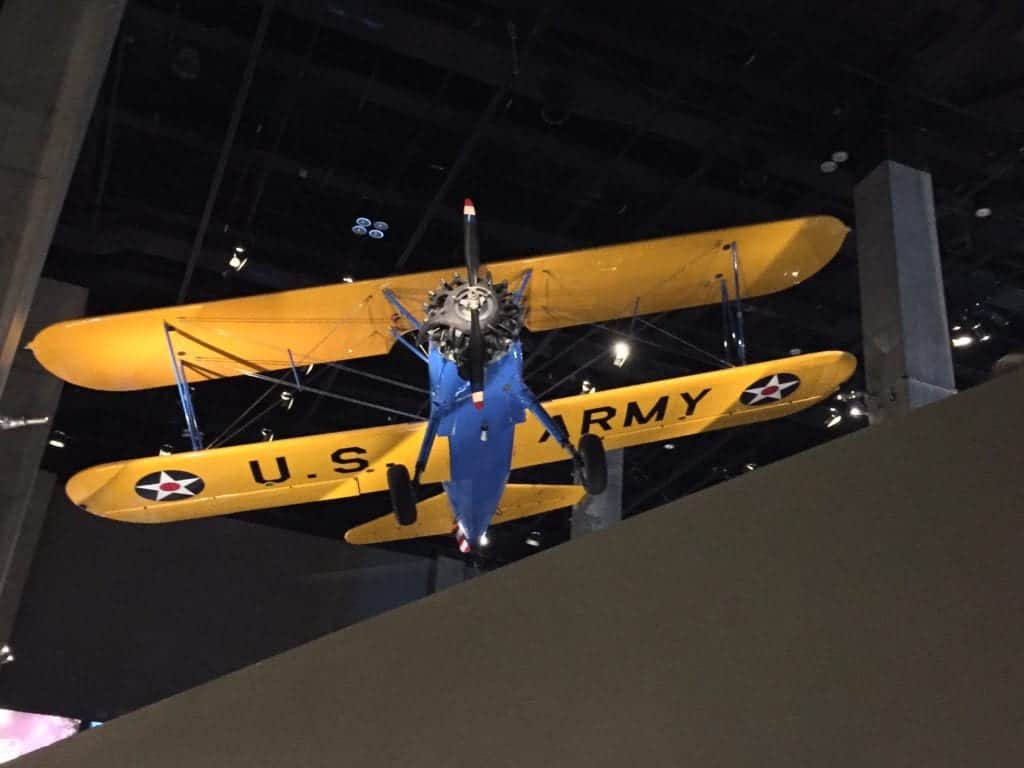
In the sports gallery, be sure to look for the blazer worn by Althea Gibson, one of the first African-American tennis stars, Jack Johnson’s boxing gloves, a pair of 1985 Air Jordans, and the leotard belonging to gold medal Olympian Gabrielle Douglas.
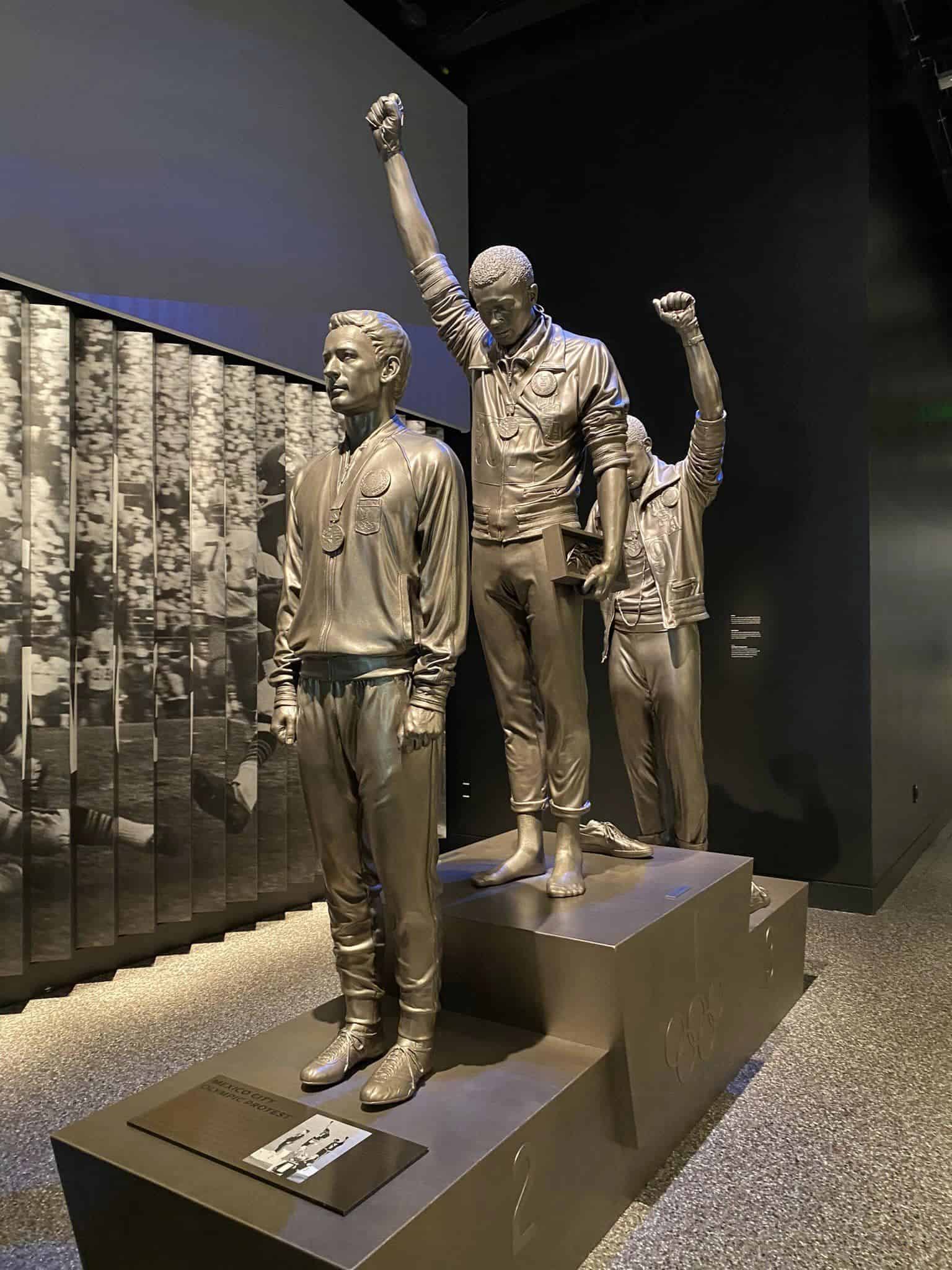
L4: Culture Galleries
This floor shifts the focus to popular culture, with music galleries, stage, screen, visual art, and cultural expressions. At the entrance to the music gallery, you’ll see the red Cadillac El Dorado belonging to Chuck Berry, one of the pioneers of rock n’roll.

You’ll also see the famed Mothership, the centerpiece prop for George Clinton and his bands. You’ll also see items belonging to movie stars, like the tap shoes of Sammy Davis Jr., and stage performers, like the original costumes from the Broadway hit The Wiz.
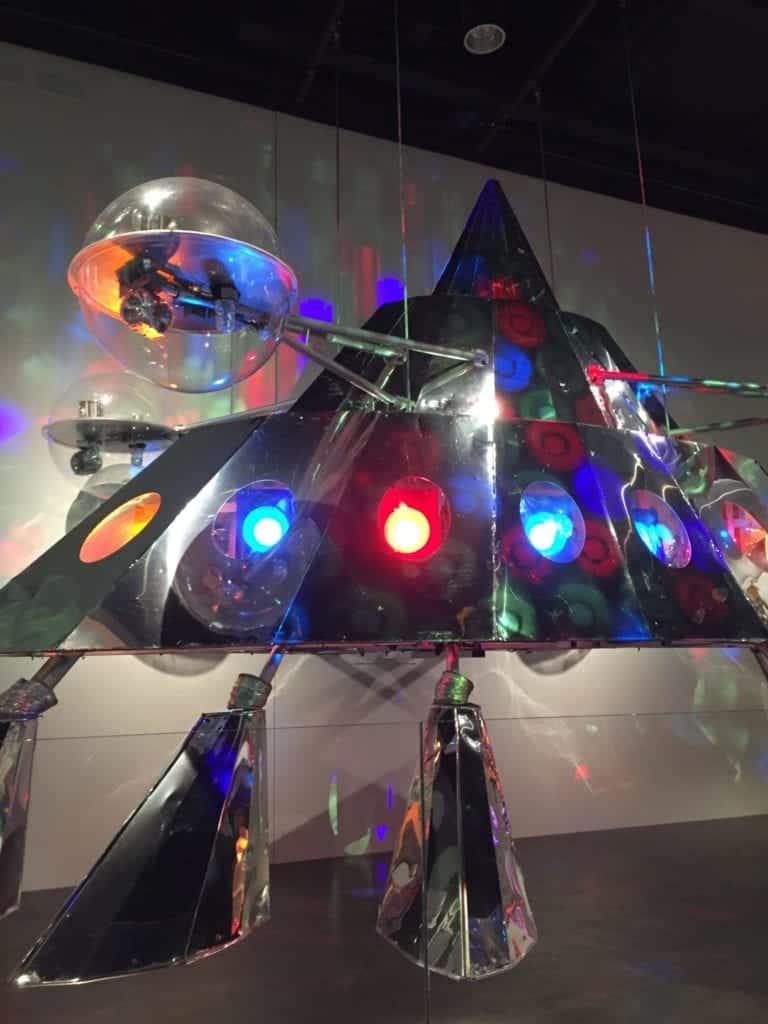
Be sure to check out our comprehensive list of things to do in DC as well as these related posts:






